Mississippi’s Longleaf Trace: April 2025 Trail of the Month
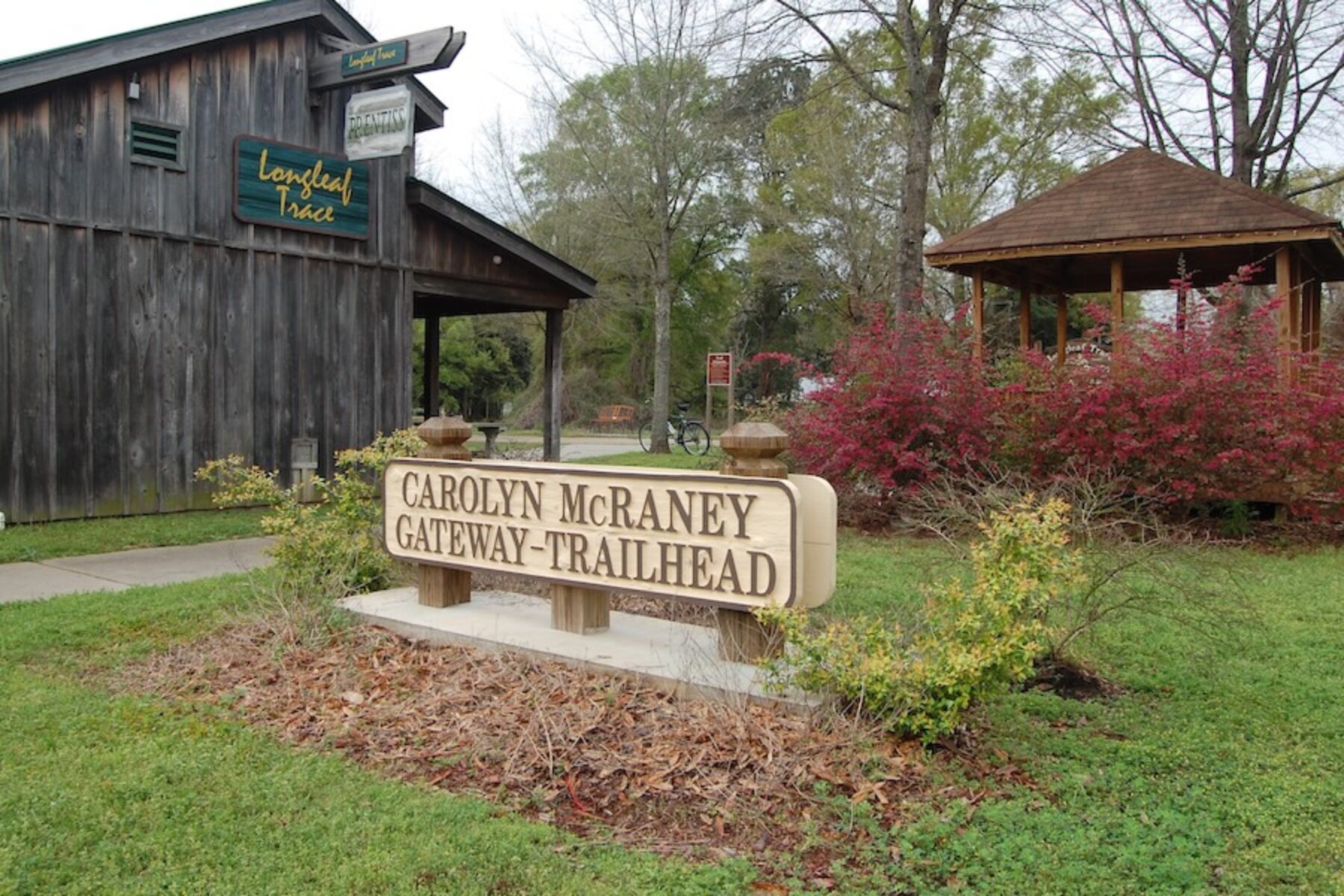
James Moore still remembers when the Longleaf Trace was nothing more than an idea. He’s owned and operated his bicycle shop in Hattiesburg, Mississippi, for 40 years now—long before the rail-trail came to town—and has seen firsthand its transformative impact.
“I’ll never forget how wonderful it felt to be on the Trace in a safe environment and enjoying nature. It just makes me feel like a kid again.”
—Lorie Sanford
In the 1990s, Moore and a handful of other people in a grassroots effort turned what was once a disused rail line into what it is today: a 44-mile Hall of Fame rail-trail connecting a handful of communities across rural southern Mississippi. The trail begins on its western side in Prentice and runs southeast to Hattiesburg, one of the state’s most populous urban centers.
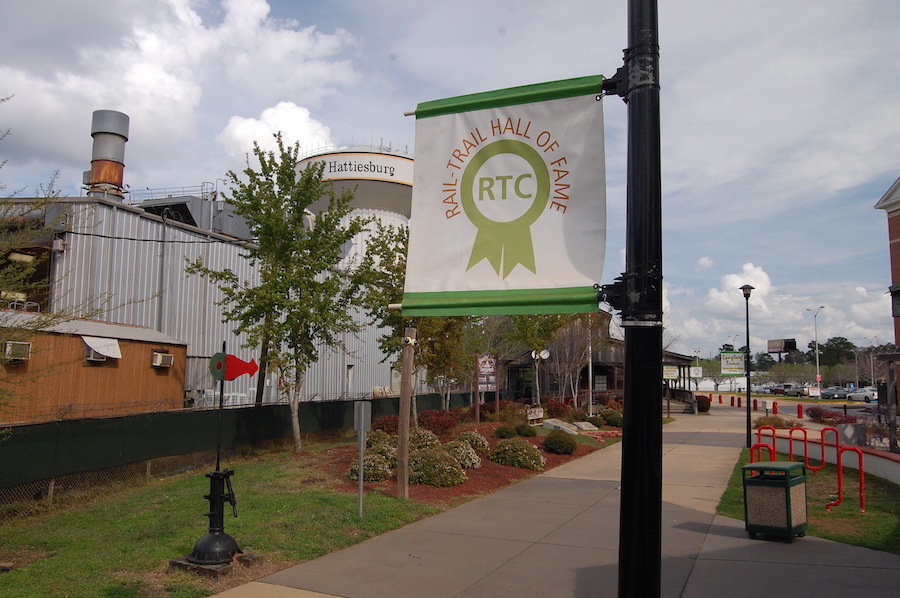
“The downtown area of Hattiesburg back in the ‘70s became a ghost town like many downtowns did,” Moore explained. “First you had the mall that attracted all the downtown anchor stores like Sears, JCPenney and so forth, and then that mall was killed so there was just nothing left. But when there was news that the trail would eventually go all the way to downtown, people began buying some of the old industrial buildings and put a lot of money in them—and now we have a thriving downtown.”
A Community Gem
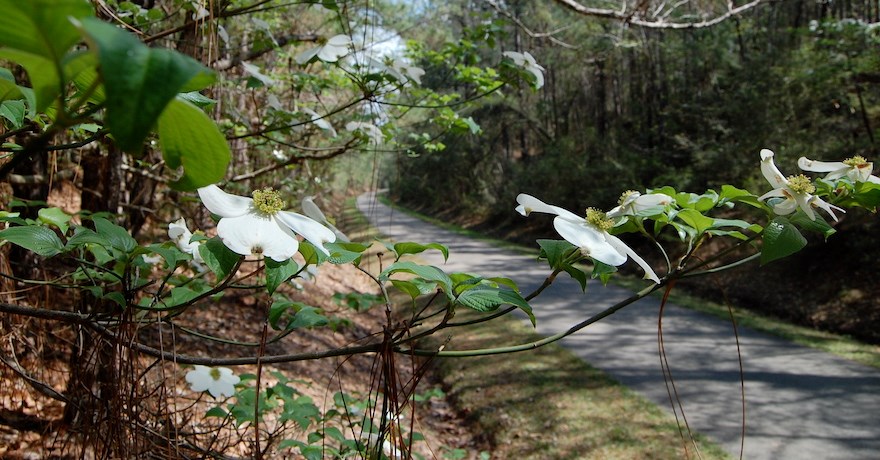
Longleaf Trace Executive Director Mary Scruggs estimates that the trail is used at least 300,000 times a year. As Hattiesburg is a medical hub for the region and home to two major universities, that figure also includes the thousands of medical staff and students that use the trail for commuting.
“When people come from out of town, a lot of them want to go part of the way [on the trail] and spend the night,” Scruggs said. “We have Airbnbs and restaurants along the trail, and I think it’s helping things grow economically.”
She noted that its beaver ponds, spring flowers, autumn leaves and the tall longleaf pines for which the trail is named are big draws. Along its route, the Longleaf Trace provides access to numerous smaller communities with old-timey charm, plus offers eight trailheads, most of them former train depots with nods to the area’s railroad past.
Earlier this year, Jed Darby, who ran Jed’s Perfect Endurance Bikes in Hattiesburg for 10 years, moved to a new location to be closer to the trail. The new space includes a coffee bar, bike rentals and other amenities, like showers. This past February alone, which is usually the store’s slowest month, Darby said the store sold more bikes than they historically ever have during that month. “We’re breaking records,” he enthused.
Aside from his business, Darby is a fitness coach who has competed in multiple races, triathlons and world championships. His passion for fitness and cycling found a home on the Longleaf Trace. For the past 11 years, he’s hosted group rides on the trail, where sometimes upwards of 60 people show up to ride with him.
“It’s a great form of exercise for people that are fitness-oriented and love the social camaraderie,” Darby said. “We have triathletes and regular cyclists, that all meet up with a common goal to just go out there and enjoy ourselves and have fun on the bike. It’s very, very contagious.”
And Darby isn’t the only person hosting groups on the Longleaf Trace. Scruggs noted that there are many others, including the Pine Belt Pacers, who host a weekly run club, and others that organize fun runs and events to fundraise for causes that combat health issues such as heart disease, diabetes and cancer.
The Rail Corridor’s Transformation
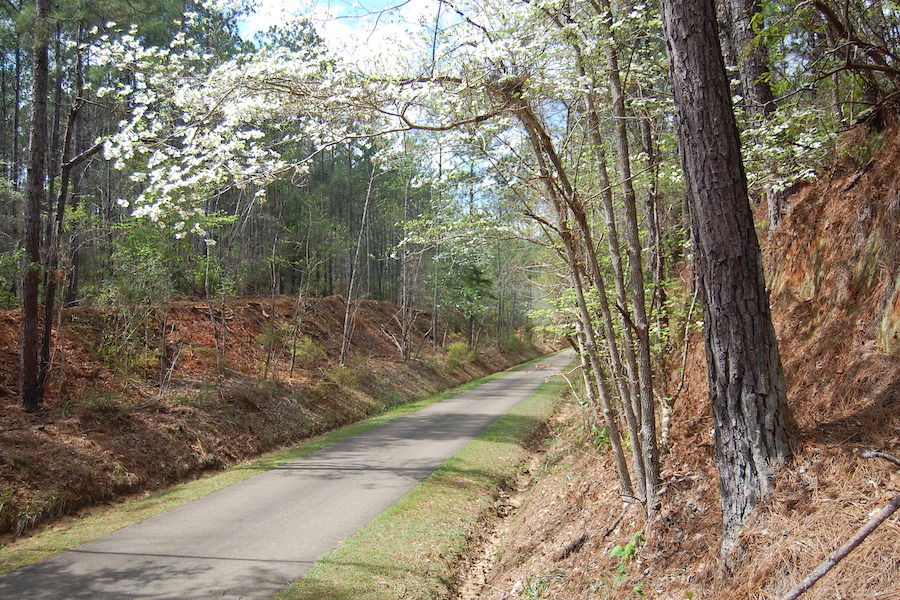
Before this community rebirth, the corridor was used by the Pearl and Leaf Rivers Railroad. Completed in 1897, it was used through the 1920s for the region’s timber industry. It was eventually absorbed by the Mississippi Central Railway and later sold to the Illinois Central Railroad before being abandoned in 1993.
Thanks in large measure to legislation drafted by the late Stone Barefield, a former Mississippi state representative and Forrest County attorney, a collaborative board was established to manage the rail-trail that now runs through the corridor. Its members come from areas connected by the trail: Forrest, Jefferson Davis and Lamar counties, as well as the cities of Bassfield, Hattiesburg, Prentiss and Sumrall. In his honor, an underpass along the trail—painted with a beautiful mural—bears his name.
Barefield was also the one who approached Moore to rally the local cycling community behind the trail project. Moore was excited to help and set up a meeting with his usual customers, as well as some folks from the equestrian community and a few runners, who all agreed to raise private money for the project.
“A week later, I close my shop, take my wife to dinner and go back to open up for the meeting, and there are cars and vehicles parked blocks away from my business—the parking lot was full,” he recalled of the swell of people who turned up to hear about the project.
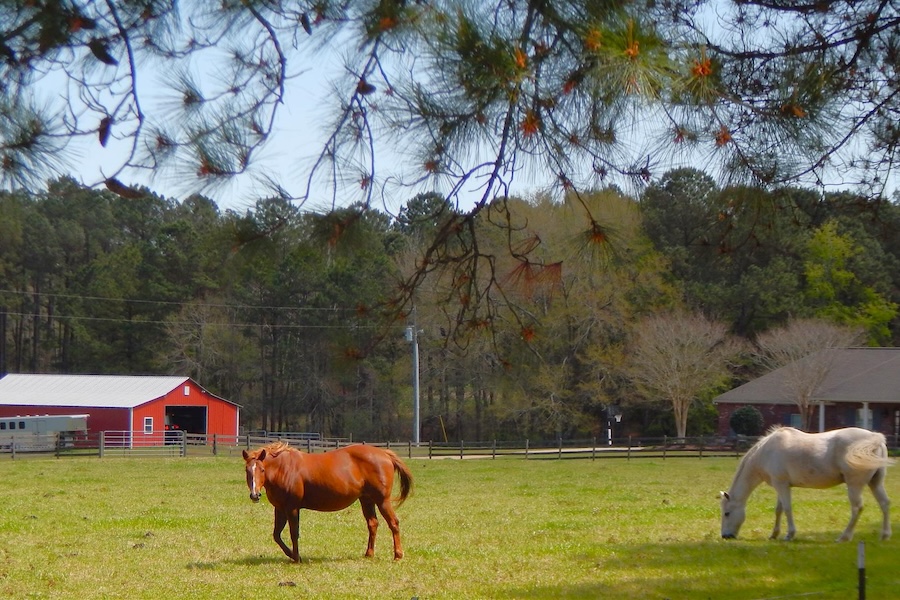
But not everyone was happy about the trail, especially the farmers who owned land along the corridor. Moore remembers some initial meetings about the trail as “hostile.” Some were so against the project that they threatened to use force. Moore vividly remembers one such incident. “One gentleman stood up from the back and he says, ‘I’ll tell you one thing, if you build this across my land, using my land as the trail property, there’ll be a body on it the first time you open it up.”
Things eventually cooled down with continued outreach. “We went to all the little towns that this would go through and had a series of public meetings,” Moore recalled. “That did a lot towards calming fears and letting people know what this was and what it wasn’t.”
Within a year, local trail advocates were able to raise $150,000 to kickstart the Longleaf Trace’s development. Construction began in 1999 with the trail built in two phases, finishing in 2004. The total cost was $5.2 million, with the additional money coming primarily from state and federal grants, including Transportation Enhancement funding (later known as Transportation Alternatives).
“It’s just a testament to how popular these things become when the people who were its most ardent adversaries are the ones that now are using it the most and championing it for everyone else,” Moore reflected.
A Trail for All
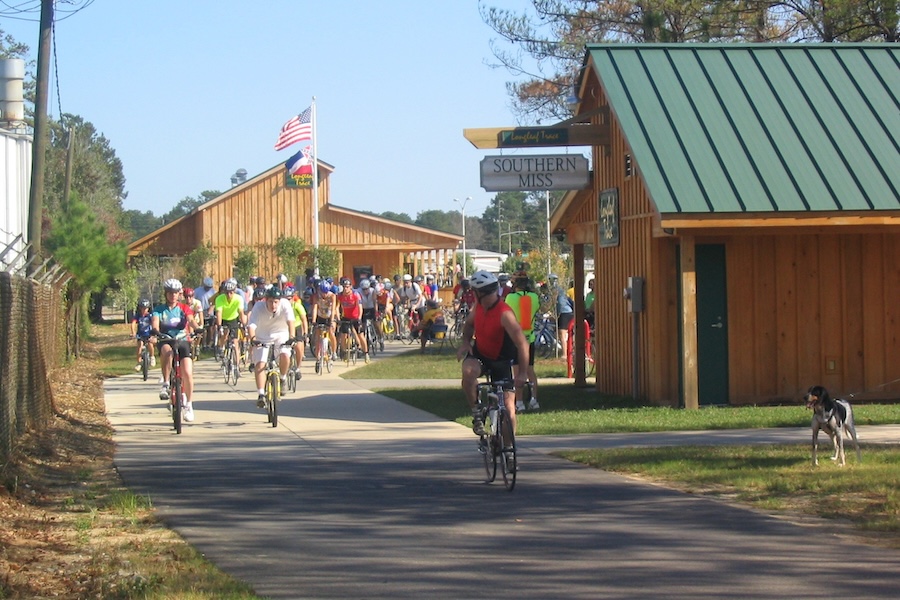
For Moore, the trail also has a deeply personal connection. For the past five years, he has helped recovering addicts find new meaning and purpose through cycling. “Ten years ago, next month, we lost our son Jeffrey to a heroin-fentanyl overdose,” he explained. “I struggled after his death to try to figure out what I could have done differently.”
Searching for answers, Moore read books about addiction and recovery. “The thing that kept coming up was the importance of physical activity to long-term recovery,” he said. Since then, twice a week, Moore meets with patients from local drug rehabilitation centers, including the one his son was once at, and takes them out on the trails to bike. Moore said his hope is to reconnect people to the outdoors. Many of the people who join his program and then graduate from the in-patient treatment visit him at his shop afterwards to get a bike. One of those people is Lorie Sanford.
Sanford fell on hard times after struggling with alcoholism and becoming addicted to heroin. She lost her nursing license and had been living outdoors for seven years before getting into an in-patient treatment center. “It really changed my life,” she said, recalling the day she went on her first ride with Moore. “I rode so much that day and was trying to beat everybody and was way ahead of everybody.”
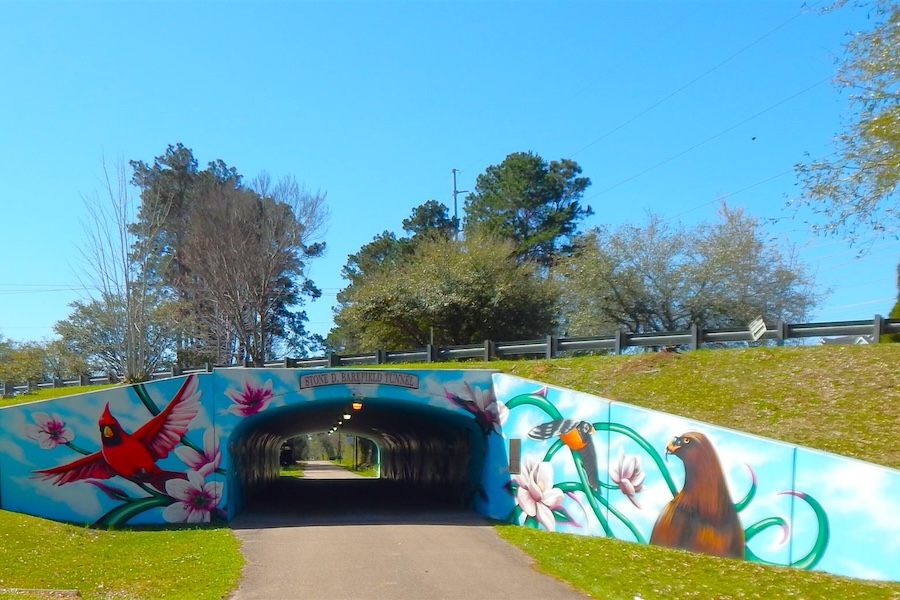
She credits the Longleaf Trace and bicycling with helping her stay off drugs. She’s been sober three years now and is hoping to get her nursing license reinstated by the Mississippi Board of Nursing next month.
“I’ll never forget how wonderful it felt to be on the Trace in a safe environment and enjoying nature and connecting to the spirituality that is my higher power,” she said. “It just makes me feel like a kid again.”

Related Links
Trail Facts
Name: Longleaf Trace
Used railroad corridor: Originally the Pearl and Leaf Rivers Railroad and later the Illinois Central Railroad
Trail website: Longleaf Trace website
Length: 44 miles
Counties: Forrest, Jefferson Davis and Lamar
Start point/end point: The trail begins at Chain Park (E. 8th Street and Chain Park Drive, Hattiesburg) and ends at the Carolyn McRaney Gateway (1001 Front St., Prentiss).
Surface type: Asphalt; a paralleling 24-mile, dirt-surfaced equestrian trail runs between the Clyde Depot trailhead (Railroad Road, 0.3 miles northeast of Old Hwy. 42, Hattiesburg) and the Carson Station trailhead (742 Old Hwy. 42, Carson)
Grade: The trail is mostly flat with gradual elevation gains, most notably between the Carolyn McRaney Gateway on the west end of the trail in Prentiss and the Carson Station trailhead.
Uses: Walking, bicycling, inline skating and horseback riding; wheelchair accessible
Difficulty: Easy
Getting there: The closest airport is the Hattiesburg-Laurel Regional Airport (1002 Terminal Drive, Moselle), about 13 miles from the east end of the Longleaf Trace in Hattiesburg.
Access and parking: From east to west, parking is available at the following trailheads:
- James Lynn Cartlidge Gateway (2895 4th St., Hattiesburg)
- Jackson Road Station (77Jackson Road, Hattiesburg)
- Clyde Depot (Railroad Road, 0.3 miles northeast of Old Hwy. 42, Hattiesburg)
- Epley Station (1 Epley Road, Hattiesburg)
- Sumrall Station (71 Railroad Ave., Sumrall)
- Bassfield Station (135 General RE Blount Drive, Bassfield)
- Carson Station (742 Old Hwy. 42, Carson)
- Carolyn McRaney Gateway (1001 Front St., Prentiss)
To navigate the area with an interactive GIS map, and to see more photos, user reviews and ratings, plus loads of other trip-planning information, visit TrailLink™, RTC’s free trail-finder website.
Rentals: Bike rentals are available at the Longleaf Trace’s James Lynn Cartlidge Gateway (2895 4th St., Hattiesburg) from Monday–Saturday, 8 a.m. to 3:30 p.m. Additionally, Jed’s Perfect Endurance Bikes (68 Jackson Road, Hattiesburg; 601.255.2266) also offers bike rentals on the east end of the trail.
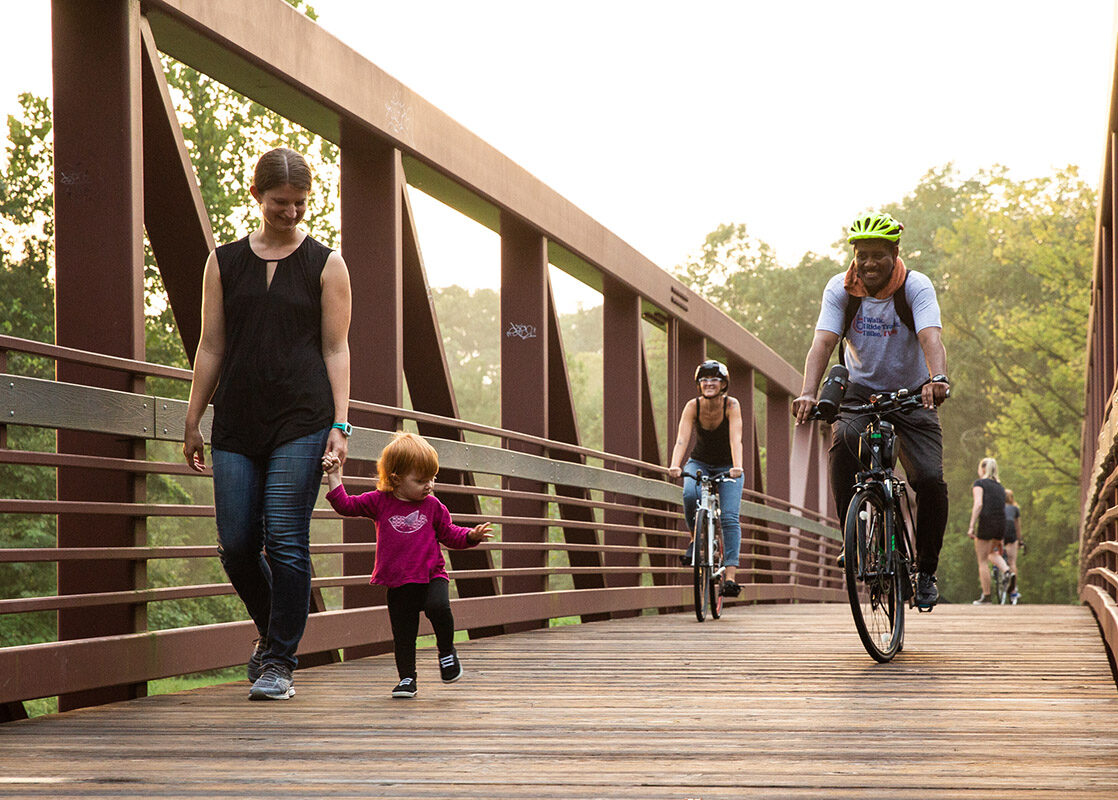
Donate
Everyone deserves access to safe ways to walk, bike, and be active outdoors.
